
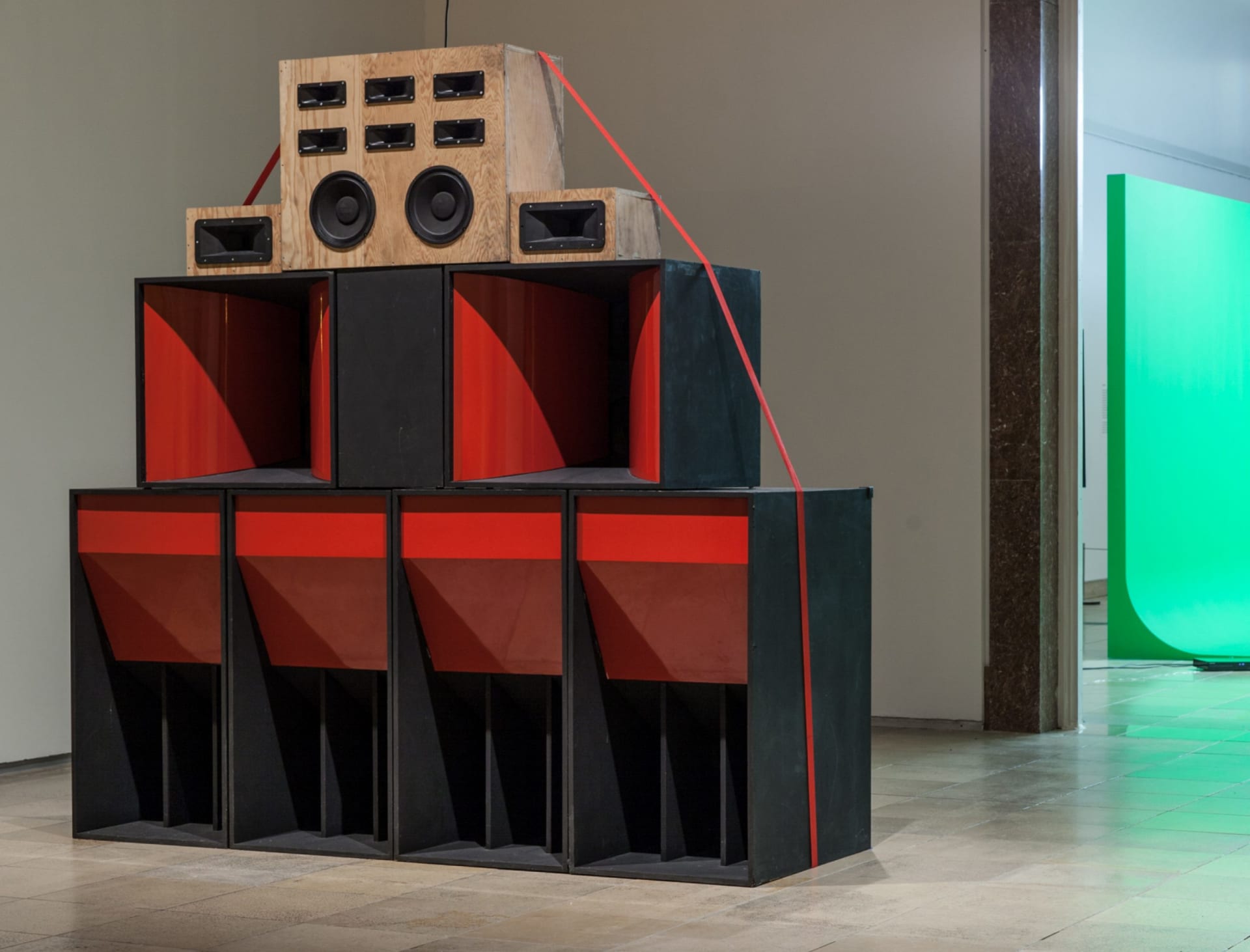
Badman Forward: Dubstep’s History and Legacy
Tracing how the genre's signature deep bass and sparse rhythms have permeated every corner of electronic music since the '00s.
Coined by French philosopher Jacques Derrida in his 1993 book Spectres of Marx, the term “hauntology” is a neologism combining the words “haunted” and “ontology,” usually applied in postmodern and contemporary philosophy to delineate the traces of past cultural histories permeating culture like ghost-like presences. Notably repurposed by British theorist Mark Fisher in the early aughts, the term gained a new currency when applied to music theory. For Fisher, hauntology is an attribute of the sonic sphere, a language that manifests through the use of devices like reverb, echo, and low-frequency equalization in bass music practices that tangibly ties modern music to the ghosts of its predecessors. Specifically, hauntology defined the signature characteristics of the shadowy, vacuumed, and sonic poltergeist-inhabited sound of early-2000s London: the sound of alienation.
Alienation was a unifying quality of early-2000s British underground electronic music, a motif that can be traced back to the ever-present legacy of dub in British culture. Through shifting, cinematic feedback precise equalization, dub musicians achieved an alienating sound that, at its core, represented a direct translation of space into sound—influenced by Afrofuturist concepts like the nonlinearity of time and the projection of past sounds into an unknown future space—and served as a stylistic canon for past and present bass music. This three-dimensional approach to music production in the late 1960s helped develop a new sonic register based on technical experimentation in the abyss of low-end frequencies and deep echoes.
Explorations in bass have defined British club music since the early 1990s, and strong references derived from sound system-based genres like dub and dancehall have persisted even today. Journalist and critic Simon Reynolds identifies this stylistic lineage as the “hardcore continuum”—a “musical tradition/subcultural tribe” that links together hardcore, jungle, UK garage, grime, dubstep, and their in-between derivates. In fact, dubstep wasn’t listed as part of the continuum in the original six article series Reynolds published in The Wire, as the genre was still incubating at the time Reynolds was writing. But like jungle, UK garage, and drum and bass, dubstep (in its OG manifestation) shared the same infrastructure with the other continuum genres. Dubplates, raves, sound systems, and pirate radios were all core elements reciprocally connected, and dubstep’s use of them further solidified the system Reynolds envisioned for British club music.
For a listener in 2020, early dubstep’s sonic palette is perhaps the most distinctive and identifiable among the others in the hardcore continuum, partly because the genre formed while incorporating stylistic elements from adjacent species of club music under a coherent stylistic register. The OG dubstep experience came with an aesthetic—a whole universe where references to dark garage, digi-dub, ambient, jungle, and 2-step were fused together with no particular rule. There was no guiding principle in the dubstep form, as the genre grew out of instinct, almost sentimentally, from a shared desire to produce music that was relatable on an emotional level while still being situated in the dancefloor space—a true conceptual badman-style operation. This experimental drive explains why we have such a multifaceted spectrum of trends within the same genre. Everyone had their own definition of dubstep because there wasn’t one, as well as their own theory on the birth and evolution of the genre.
This element will show content from various video platforms.
If you load this Content, you accept cookies from external Media.
Around 1998-2001, the first canons of dubstep began to emerge, including the deep, enveloped bass in Dub War’s (AKA Benny Ill & Rebel HiFi) “Keep On” (1998), the 138-bpm proto-dubstep shuffled triplets in the still very much 2-step-influenced El-B’s “Two Thousands” (2000), and the riddim-style snare on the third beat in Horspower Productions’ remix of “Log On” by Elephant Man (2001). But it wasn’t until 2002 that dubstep was institutionally recognized, when the first cover story coining the term came out in XLR8R magazine. Around that time, the genre counted on a larger suite of producers, with many early releases by the likes of Croydon artists Skream and Benga being played in the now-legendary Hatcha sets, and the release of the seminal cut “Fat Larry’s Skank” by Benny Ill, Kode9 & The Culprit that same year on Tempa. (Personally, I believe the Benny Ill and Kode 9 B-side, “Tales from the Bass Side,” invented dubstep.)
Momentum was building, and the drive towards massive low frequencies, minor-chord drama, and off-beat drum patterns was still instinctive—perhaps a reaction towards the ecstatic euphoria, “Summer of Love” vibe dominating the British rave scene at the time. With the rise of dubstep, the club became a place for meditation, a submerged echo-chamber (again, in hauntological terms), a disorienting experience for both the mind and the body.
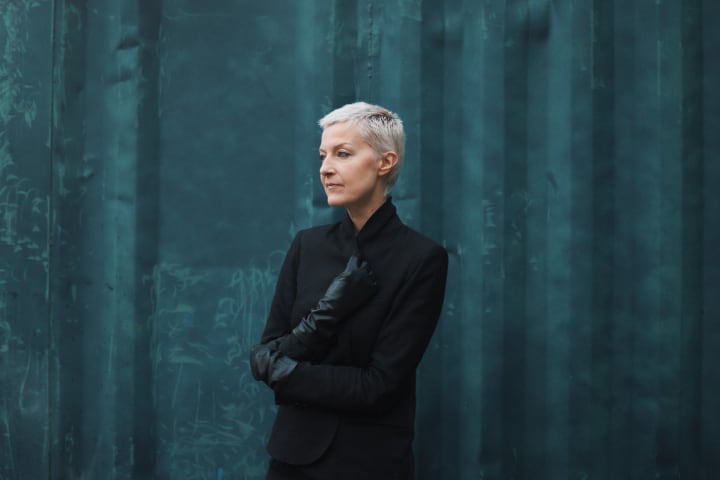
The emblem of this new dark configuration of the club was the east London night Forward (stylized FWD>>). Hosted at Plastic People in Shoreditch, the party functioned as the crucial catalyst for the embryonic dubstep scene, a meeting point where the sound was developed month by month by resident DJs playing unreleased bootlegs. Every month, thanks to FWD>>, dubstep grew, assuming its particular form, as thoroughly documented by journalist Martin Clark’s weekly column reporting on seminal parties, releases, and people, and by Mary Anne Hobbs’ radio show Dubstep Warz aired on BBC Radio 1, which just celebrated its 15-year anniversary.
“FWD>> was a place you went to hear the latest beats and tracks—dubplate-based sets, usually cut on to 10-inch acetates,” recalls Rob Ellis (AKA Pinch). “It was a space to trial experiments in a quest to find the next exciting way of expressing rhythm and bass, to get ‘that’ feeling of hearing something you didn’t quite fully understand yet but that spoke very directly to you somehow.”
In addition to being a meeting spot for the community gravitating around dubstep, FWD>> also facilitated the conceptual reinvention of the club as a space for deepness. The venue, participants recall, was a dark, unadorned cube arranged with a massive Funktion One sound system capable of filling the whole space with low-end vibrations. The system at FWD>> had a massive influence on the ever-evolving sound; DJs and producers acknowledged it as the standard, a universal manual of style. Hence, the genre progressively occupied the lower end of the frequency spectrum because of the structural possibilities of the machines through which the tunes were played.
This element will show content from various video platforms.
If you load this Content, you accept cookies from external Media.
Dubstep had to be experienced through sound systems adhering to the standards set at FWD>>. These tunes were conceptualized, produced, mastered and released for specific spaces with specific structural characteristics. The genre developed to be a spatial practice—a three-dimensional sound-making approach akin to Jamaican dub’s proposition—where the sound had a physical manifestation. In a way, the agency of the sound system over the music’s production is analogous to the concept of site-specificity in contemporary art theory, where works of art can function or exist only in direct interrelationship to a specific place. If and when this relation fails, the work ceases to exist. Similarly to Sol Lewitt’s wall drawings, or Katharina Grosse’s large-scale airbrush interventions—works that respond to a given context, condition, or space, making it the very reason for their own existence—dubstep music cannot be separated from its site of fruition and its required structural outputs.
The site-specificity of dubstep extended to its circulation. Technically, the genre was developing simultaneously to the club scene around it, and the foundational tunes the musical style was building on were specifically produced for the club in which they were played. Every producer got to listen to what the others had “built,” and then get back to the studio to add on top of that. Repeat for about six-plus years, and you get the whole dubstep catalogue.
Peculiarly, the tracks premiering at parties such as FWD>> or Bristol’s Subloaded resided outside the traditional market; they were not products, but artifacts. Most of those tunes were club weapons mastered in a rush the afternoon right before the gig. (Most of the dubplates played in London had been cut at Croydon’s Transition Studios.) This production cycle based on bootlegs, edits, remixes, and VIP versions cut on acetates ended with the final product, the dubplate, played at the club for an audience that was rapidly becoming aware of what was played; listeners recognized novelty in the genre and were hyped by one DJ referencing another. And while many of the dubplates became anthems and got signed to labels for proper commercial distribution, others remained one-copy-only acetates sold under-the-counter at South London’s Big Apple record shop. “Dubplate culture originated in Jamaica from ska and reggae genres. We copied them,” explains DJ and producer Daniel Lockhart (AKA Youngsta). “It was the only way to test new music that had not been pressed on to vinyl yet. There were no other options for us to play new unreleased music back then like we can now using digital.”
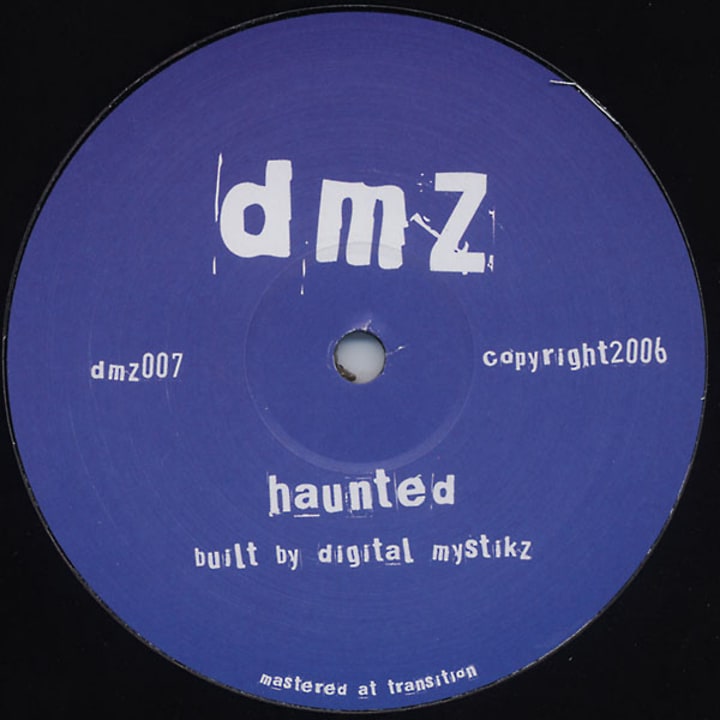
This element will show content from various video platforms.
If you load this Content, you accept cookies from external Media.
Dubplate culture had allowed a hi-speed proliferation of tunes that defined, and also diversified, the genre while allowing multiple stylistic trends to come up within it. As dubstep moved into its evolutionary phase (circa 2003–2005), DMZ’s Mala, Coki, and Loefah began incorporating influences from tribal, dub, and reggae combined with fiercely tense orchestral strings, as testified in some of the label’s seminal releases such as Digital Mystikz (aka Mala and Coki) and Loefah’s “Lost City” (2004). Meanwhile, Kode 9’s first EP in collaboration with The Spaceape (2004), released on his newly-founded imprint Hyperdub, paved the way for the remarkable stylistic switch to a more austere, essential aesthetic. “I recall hearing “Haunted” by Coki for the first time in the sound check before the first ever DMZ party at Third Base in Brixton,” says Loefah. “That was definitely a peak moment.” “I’m super proud to have been a part of something so special. I’ve loved watching how it’s progressed and evolved, even if it’s not always to my preference.”
Around that time, things got darker, with the sound deviating towards exquisitely dense, melancholic timbres broken down by undulating tempos. In terms of its sophistication, dubstep reached its apex around 2005–2007; vocal samples were reduced to spoken words, drums became more compressed, off-beat and weird, and basslines progressed towards the iconic wobble sound. An overall sense of minimalism permeated, as exemplified by new wave producers and labels who furthered the genre’s meditative stream with works like Pinch’s extraordinarily poetic “Qawwali” on Planet Mu (2005), Burial’s genre-defining eponymous album on Hyperdub (2006), Shackleton’s “Blood on My Hands” on Skull Disco (2006), and Peverelist’s sublime, touching anthem “Roll With the Punches” on Punch Drunk (2007).
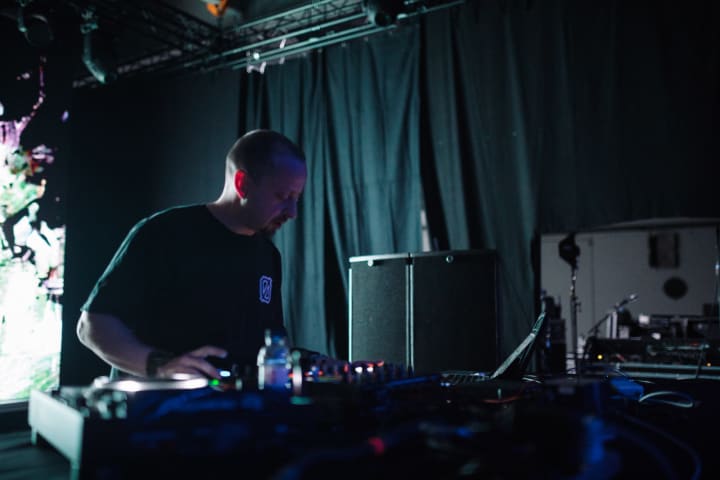
This element will show content from various video platforms.
If you load this Content, you accept cookies from external Media.
As the original sound drifted towards more obscure dimensions through tracks like Mark Pritchard’s “Elephant Dub,” the 2010s also witnessed the international breakout of dubstep and its subsequent detachment from the OG canons. Dubstep experienced a shift both in the conceptual and in the formal realm. Conceptually, the style became mystified, generalized, and exported worldwide—a process that massified the genre and shifted the investigation of this music away from the abstract, meditative aspects to a much more hedonistic, party-based fulfilment. Primarily, it was the bridge between the UK and the US that influenced this semantic shift, up to the birth of the sub-genre brostep—an all-American coinage.
“At this time some of the tunes with more of the ‘wobble bass’ element seemed to be a common denominator for setting the whole crowd off,” says producer and founder of Skull Disco Sam Schackleton. “I think that this in turn made the music more accessible to USA tastes, possibly because the frequency range is more similar to rock music. I am not sure that the sound system culture was ever so big in the USA, and perhaps this is why you got this new [dubstep] variant in the USA with Skrillex or whatever.” Formally, the genre mutated its essentialist sound in favor of a tremendously charged and formulaic narrative. The important frequencies had shifted, the once-smooth sub-bass mutated into a square, distorted wave, and the drop mentality became a thing. Dubstep was consumed by the rising tide of EDM and subsequently went on to infiltrate every mainstream playlist, TV commercial, film score, and so on. Dubstep in its initial UK-born form, sadly, fell into a Soundcloud dungeon situation.
This formal shift from the first-wave experience led to the institutionalization of dubstep (i.e. a poorly-rendered mainstream image of the original style). Possibly, dubstep turned into brostep due to a technological shift in format. The sound lost its sonic foundations (sub-bass, low frequency, and sound system culture) as it began to travel as lower quality .mp3 files to the world’s arenas, festival stages, mass-attended flash mobs, and other venues that had never been tuned for its original sound. (Skream’s most recent electro-sounding, EDM-blockbuster remixes will astral-project you straight to Coachella, if you like.) And most importantly, the new thing diverged from the cultural milieu in which first-wave dubstep proliferated. It was a completely tabula rasa-scenario where all the inputs derived from historical experiences (such as Jamaican sound systems, dubplate culture, and reggae upbeat tempos) were completely denied.
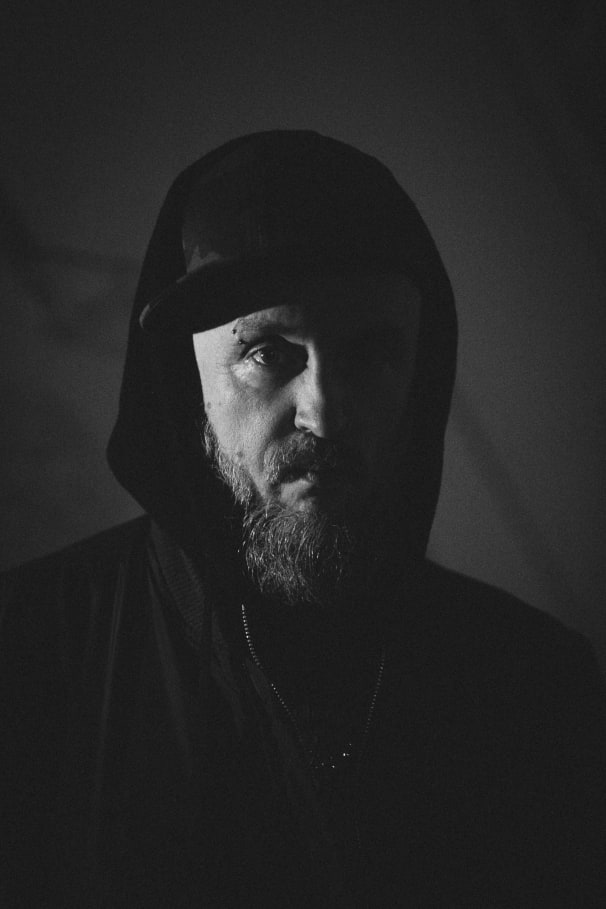
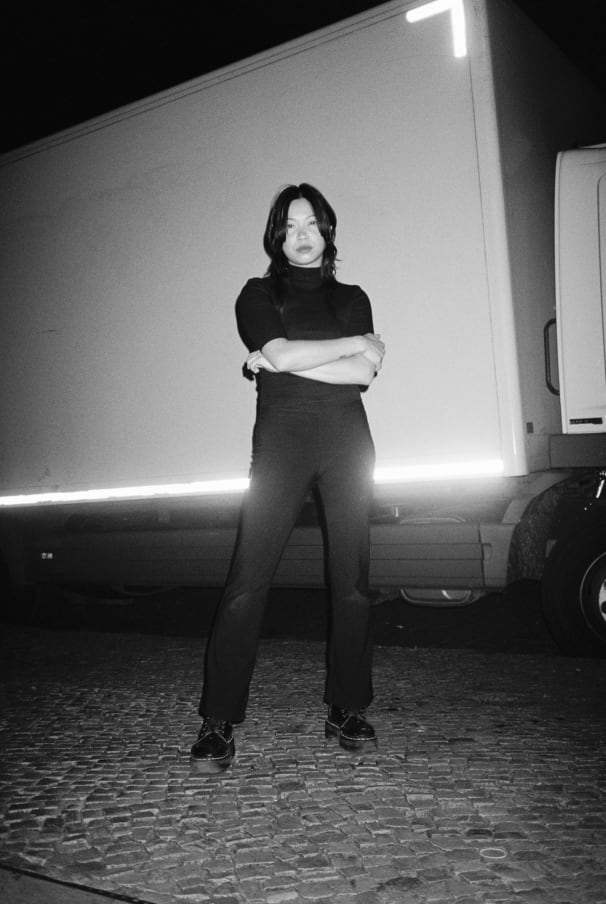
The original dubstep experience exists today as an archeological product, and even if the authenticity of the OG sound as a proper genre seems largely lost, we still have examples of how dubstep tropes are incorporated within the stream of bass music today, in the UK and beyond. OM Unit’s new techno-forward EP The Passenger, and The Bug’s move into shoegaze-riddim on his new album In Blue in collaboration with Berlin-based vocalist Dis Fig, for instance, point towards a reinvention in terms of palette and composition.
In the experimental end of the spectrum, we have witnessed an obsessive attention towards cinematic FX and apocalyptic, HD-sounding samples and highly-crafted sub bass throughout the 2010s in the catalogues of labels like PAN, Halcyon Veil and Fade to Mind—acts later associated with the umbrella-term “deconstructed club music.” Artists like Raime, Rabit, Mistress, Logos, and Mumdance furthered a new definition of the grime- and dubstep-adjacent sounds, consistently referencing historical tropes and detouring around them in favour of a much more obscure, spectral aesthetic.
Short-lived yet heartfelt, dubstep is dead and that’s totally fine, as its intellectual legacy is deeply embedded in every contemporary music genre formatted for the club. As DJ, producer, and Keysound head Martin Clark argues in an email thread (for which I thank him), “What is sound system culture when the centre of your musical world is your mobile? And the central unit of cultural expression is the Tiktok/Instagram story—a visual unit, and one that badly supports 50hz bass weight?” Today, it’s hard to imagine a Lil Uzi Vert beat without deep sub-bass stabs or hi-hats rotating at 140bpm, and it’s hard not to read Dean Blunt’s project Babyfather as a reexamination of the archetypal dubstep and pirate-radio mentality. A deeply conceptual form of club music, dubstep combined meaning and functional, physical purpose—simultaneously tactical and cerebral.
This element will show content from various video platforms.
If you load this Content, you accept cookies from external Media.
Published February 12, 2021. Words by Federico Sargentone.


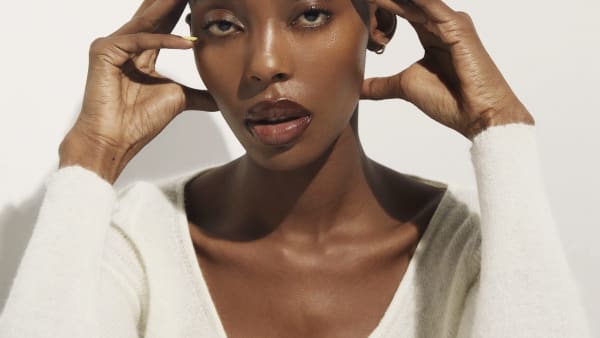


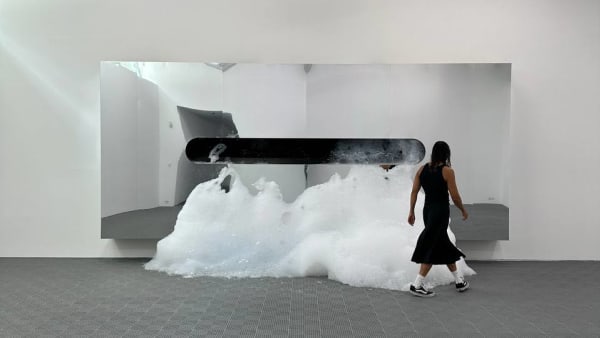






Follow @electronicbeats